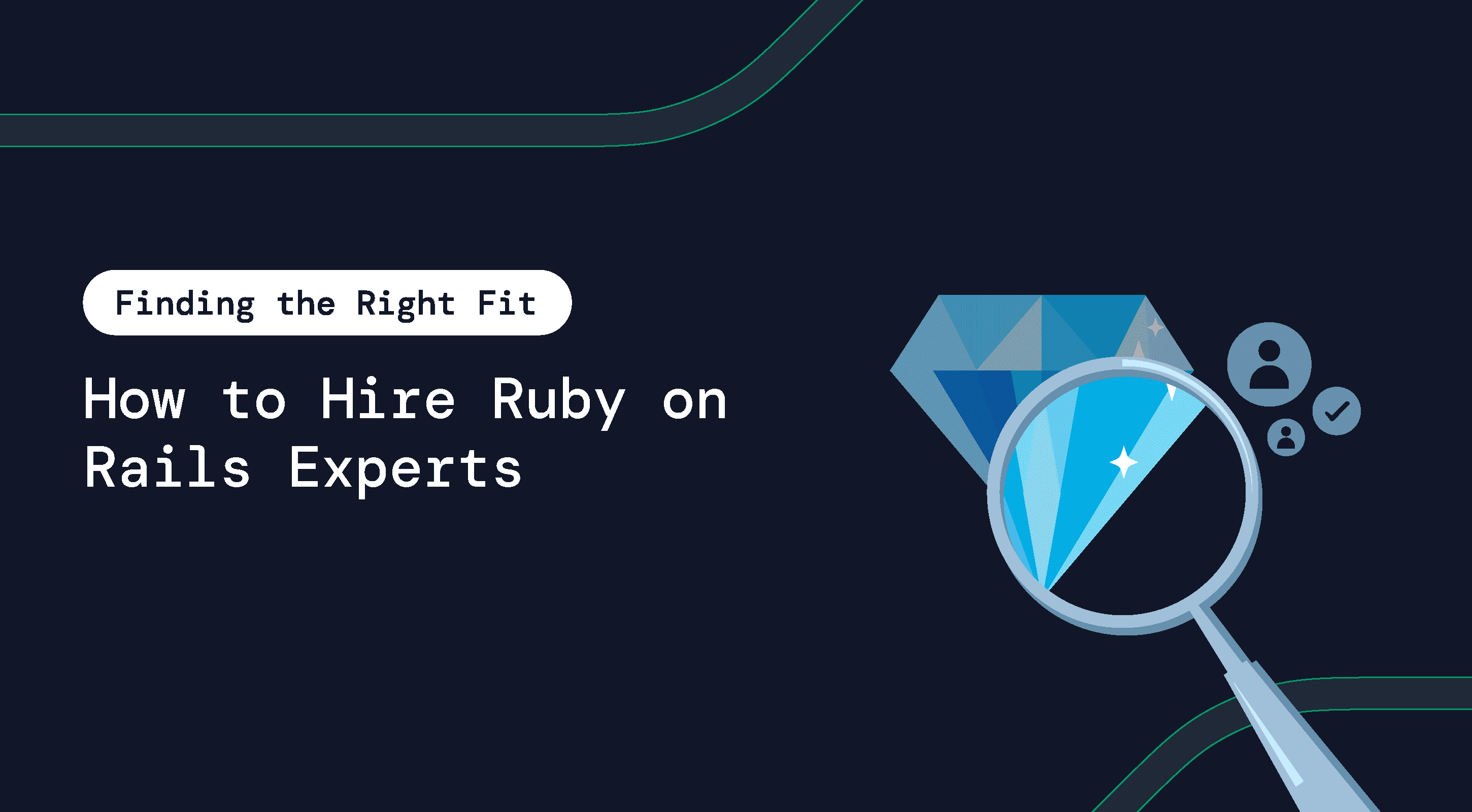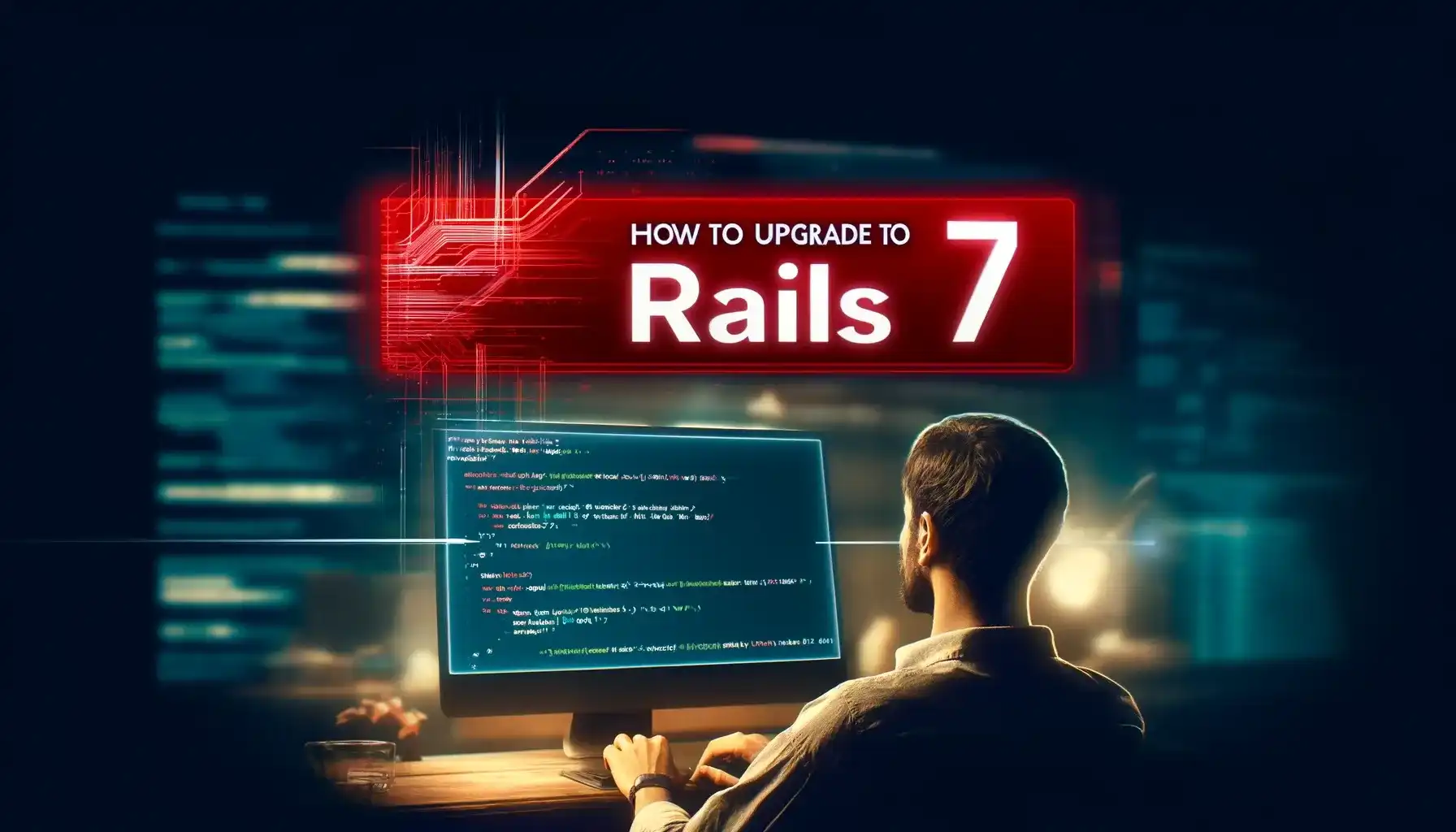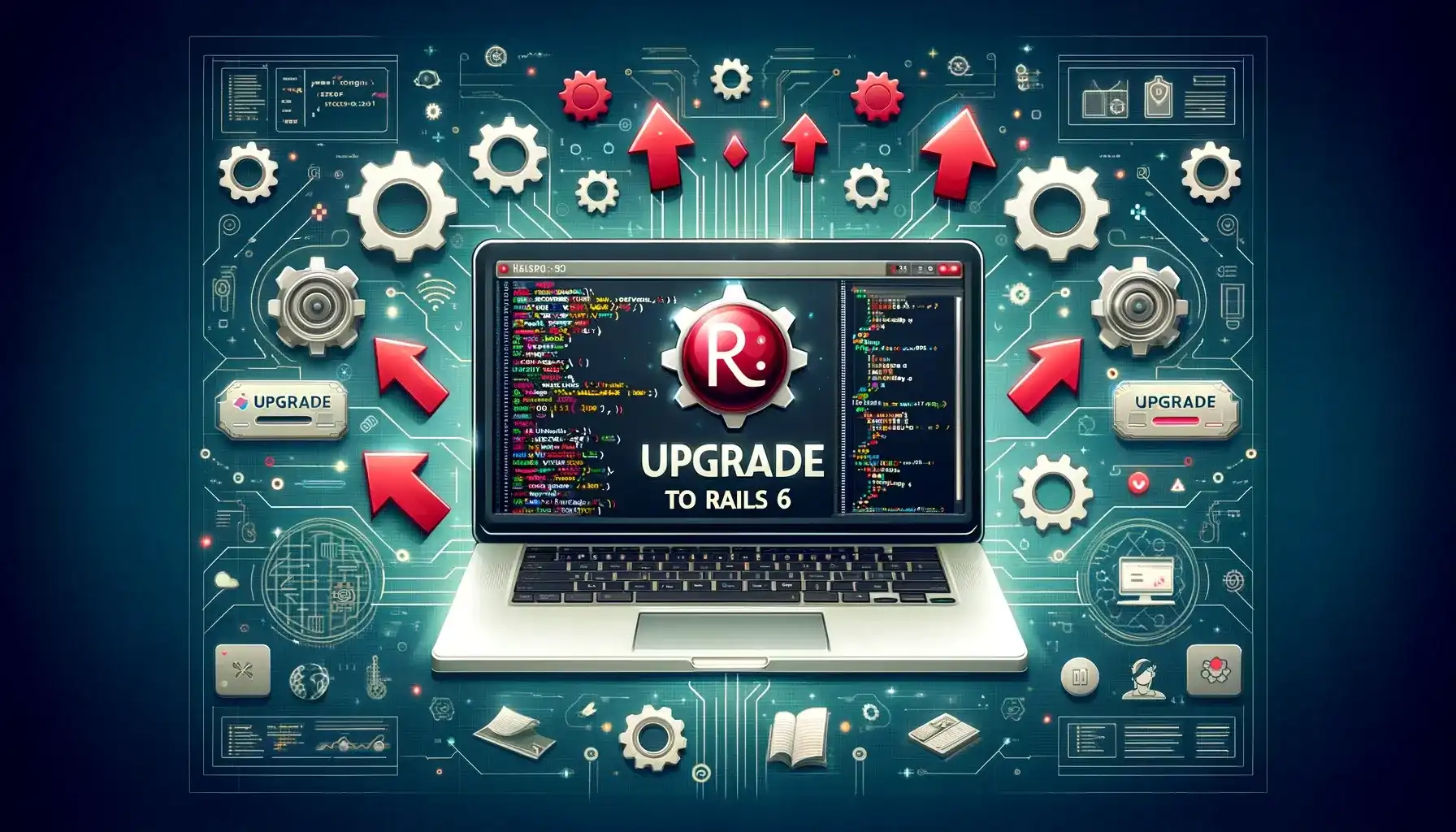How to Hire Ruby on Rails Developers
Looking to hire Ruby on Rails developers? This practical guide walks you through screening, interviewing, and onboarding talent that delivers fast results and long-term value.

Pichandal
Technical Content Writer

Ruby on Rails has been powering everything from lean startups to enterprise-grade platforms for nearly two decades. Its ability to accelerate MVPs, simplify complex back-end logic, and provide a rich ecosystem of gems makes it one of the most productive frameworks out there.
But building or scaling a Rails team isn’t always straightforward.
The real challenge isn’t just finding developers who “know Rails.” It’s about identifying engineers who understand the nuances of scaling applications, managing legacy code, and aligning with your product’s long-term goals.
Whether you’re a startup looking to find and hire ruby on rails developer or an established company modernizing a large Rails codebase, the hiring process has to be deliberate. For companies exploring flexible talent models, tapping into the pool of remote Rails developers can also be a strategic move.
With over 19 years of experience in the Ruby on Rails space, in this guide, we break down everything you need to know from clarifying the role and defining must-have skills to choosing the right hiring model and screening candidates effectively. If you’re wondering how to hire Ruby on Rails developers in 2025, this blog will give you a proven roadmap.
By the end, you’ll have a framework to confidently hire Rails developers who can add lasting value to your team.
Why hire Rails developers?
Despite endless chatter about “new frameworks,” Rails remains a cornerstone for companies that want to ship robust, maintainable applications quickly. The reasons are clear:
-
Faster product cycles: Rails’ convention-over-configuration approach lets developers spend less time on setup and more time delivering features.
-
Proven ecosystem: Thousands of gems (prebuilt libraries) speed up integrations, from authentication to payment processing.
-
Battle-tested scalability: With companies like Shopify, GitHub, and Airbnb scaling on Rails, the framework’s track record is undeniable.
-
Maintainability: Rails encourages clean architecture, making it easier to work with legacy apps or bring in new engineers.
-
Cost efficiency: A strong Rails developer can cover a wide surface area (back-end, APIs, testing, even deployment), reducing the need for overly large teams.
In short, hiring ruby on rails developers in 2025 isn’t simply staffing up. It’s about reducing the risk of costly downtime, security gaps, and technical debt that can slow growth, while ensuring your customers enjoy a smoother, more reliable experience.
For many companies, working with Ruby on Rails experts or choosing to hire Ruby on Rails developers through a reliable partner can make all the difference.
Which hiring model fits your need?
Before you start searching for candidates, it’s worth pausing to decide which hiring model fits your project best. The right choice depends on your stage, budget, and long-term vision.
- In-house hires: Best suited for companies with steady, long-term Rails roadmaps. You’ll have direct oversight and cultural alignment, but it comes with higher costs (salaries, benefits, onboarding time).
- Freelancers: Great for short-term projects or feature-specific work. They bring flexibility, but quality and consistency can vary widely.
- Nearshore/offshore teams: Useful when you need reliable Rails expertise at scale without ballooning costs. This model reduces hiring overhead while giving access to a broader talent pool of remote Rails developers.
- Agencies/partners: Best if you want experienced teams and structured delivery instead of piecing together individual contributors. A partner like RailsFactory brings 19+ years of Rails expertise, proven upgrade and modernization experience, and faster ramp-up with minimized risks. This model shortens time-to-hire and gives you confidence that your Rails project is in capable hands.
The key is to match your hiring model with your actual needs. For instance, a startup MVP might benefit from an offshore Rails team to accelerate delivery, while a larger company maintaining a mission-critical platform may prefer long-term in-house hires.
Start here: define the role, outcomes & budget
A common mistake is jumping straight to hiring without a clear role definition. Instead, start by scoping exactly what you need a Rails developer to deliver. This not only saves time but also attracts candidates who are the right fit.
When defining the role, be specific about:
- Rails version and stack: Are you upgrading from Rails 7.2 to 8.0, or starting fresh with Hotwire/Turbo?
- Core responsibilities: Will the developer focus on building APIs, working with background jobs (Sidekiq), or maintaining a legacy codebase?
- Tech ecosystem: Databases (Postgres, MySQL), integrations, deployment environment (Heroku, AWS, Docker, CI/CD).
- Team setup: Are they expected to work solo, or alongside front-end/mobile developers?
- Budget and outcomes: Beyond salary, take into account about productivity expectations (features shipped, stability goals, refactor timelines).
This upfront clarity makes job postings sharper and helps filter out mismatched candidates early. It also sets you up for realistic conversations about compensation, timelines, and hiring models.
Must-have technical skills
When you set out to hire Ruby on Rails programmers, make sure to look for a proven foundation across the stack:
- Rails fundamentals: Deep understanding of MVC, ActiveRecord, and Rails’ convention-over-configuration approach.
- Database experience: Proficiency in relational databases (Postgres/MySQL), migrations, and query optimization.
- Testing mindset: Familiarity with RSpec or Minitest, plus Capybara for integration testing.
- Background jobs & caching: Experience with Sidekiq/Resque, Redis, and performance tuning.
- API development: Building RESTful APIs, authentication (JWT, Devise), and third-party integrations.
- DevOps familiarity: Comfort with Docker, CI/CD pipelines, Heroku/AWS deployments.
- Version control: Strong Git practices and participation in peer code reviews.
The more senior the role, the more weight you should place on system design, scaling experience, and contributions to open-source Rails projects.
Soft skills & team fit
Rails projects are rarely solo missions. Developers often work with product managers, front-end engineers, and QA teams. Beyond technical chops, look for candidates who bring:
- Clear, async-friendly communication.
- Problem-solving beyond surface-level fixes
- Patience and adaptability when dealing with legacy systems.
- A collaborative approach to writing tests that safeguard the team’s work.
For distributed setups, especially when you hire remote Ruby on Rails developers, these soft skills are just as critical as technical ones.
Where to hire Rails developers - best channels
Once you know the profile you’re after, the next step is sourcing talent. Some of the most effective channels include:
- Job boards: Platforms such as RubyNow, Stack Overflow Jobs, or LinkedIn are cost-effective but require more effort in screening and evaluating candidates.
- GitHub & open-source communities: Many Rails contributors are active in OSS projects. Reviewing their work gives you a real-world sample of coding style and problem-solving ability.
- Conferences & meetups: RailsConf, RubyConf, or local Ruby meetups can connect you with passionate developers.
- Partners: Rails-focused agencies can provide ready-to-deploy teams. For example, RailsFactory has helped companies scale teams quickly by supplying developers who are already experienced with upgrading, refactoring, and building production-grade Rails apps. When evaluating partners, it’s worth checking independent sources like Clutch reviews to see client feedback and success stories before making a decision.
Your sourcing channel will largely depend on urgency, budget, and whether you prefer to build long-term in-house capacity or leverage external expertise.
Screening candidates
Hiring Rails developers effectively requires a structured process. Here’s a practical funnel:
-
Resume & portfolio review: Look for meaningful GitHub contributions, clean code samples, or past projects with Rails versions similar to yours.
-
Initial technical screen (30–45 min): Discuss architecture choices, scaling trade-offs, and examples of debugging complex bugs.
-
Hands-on test: Either a scenario-driven assignment (3–6 hours) or a live pair-programming session. Test real-world challenges such as resolving N+1 queries, writing RSpec tests, or setting up a Dockerized Rails app.
-
System design interview: For senior roles, dive into database sharding, background job scaling, or caching strategies.
-
Cultural fit & communication: Assess collaboration skills and ability to align with your team’s workflow.
A consistent evaluation process not only ensures fairness but also makes it easier to compare candidates objectively.
Example interview questions
Here are sample prompts to adapt for different seniority levels:
Junior Level
Active Record Model with Validations: Create a User model where email must be unique, password at least 8 characters, and age between 13 and 120. Write the validations.
Simple Association Setup: In a blog app, an Author has many Articles. Write the model associations and add a method to return only published articles.
Debugging a Form Issue: A user reports that submitting a contact form sometimes causes a 500 error. How would you debug this step by step?
Mid-Senior Level
Query Optimization: Write Active Record code to find users who posted at least 5 articles in the last 30 days, including their article count. Ensure no N+1 queries.
Background Job Design: Build a background job that processes uploaded images (resize, upload to S3, update database) and handles failures/retries.
Scaling Challenge: Your database hits 100% CPU at peak hours, slowing requests. What’s your short-term fix and long-term scaling strategy?
Senior Level
Database Migration Strategy: Add a new column to a 50M+ row table in production with zero downtime. Describe the migration plan.
Caching Strategy: Design a caching system for a news site with dynamic view counts and user-specific recommendations. Explain cache keys and invalidation.
Security Incident Response: An API endpoint has leaked user emails for 2 months. Walk through your immediate response, investigation, and long-term prevention.
These questions give insight into both technical depth and practical problem-solving.
Compensation & market benchmarks
Hourly rates for Rails developers vary by region and experience level. While the global market range typically falls between $35–$60/hour, here’s what you can expect when working with offshore developers at RailsFactory:
- 3–5 years of experience: $25–$30/hour
- 5–10 years pf experience: $30–$40/hour
- 10+ years of experience: $40+/hour, with top-tier talent sometimes exceeding this in high-demand markets
Various resources reiterates that offshore models can deliver 40% cost savings compared to local hiring, while still ensuring strong expertise, especially when partnering with a seasoned team that has established Rails practices.
Red flags to watch for
Not every Rails developer with a polished resume is a good fit. Watch out for:
-
Details in resume not matching with practical coding ability
-
Vague or outdated Rails knowledge
-
Shallow GitHub activity or no real project contributions.
-
Over-reliance on tutorials instead of production experience
-
Poor communication during interviews.
Catching these early avoids costly mis-hires.
Onboarding & retention
Hiring is only half the battle. Successful onboarding ensures new developers ramp up quickly:
-
Provide clear documentation and access to the codebase.
-
Assign a mentor for the first 30 days to guide them through workflows and expectations.
-
Set 30/60/90-day goals tied to project outcomes.
-
Establish regular feedback loops through code reviews and standups.
-
Invest in training budgets - Rails evolves steadily and keeping skills current helps retention.
When onboarding is structured, developers deliver faster, morale stays high, and turnover risk decreases.
Quick hiring checklist
Here’s a compact checklist you can use before making your next hire:
-
Role, responsibilities, and outcomes clearly defined.
-
Budget and compensation range set.
-
Sourcing channel chosen (job board, partner, referral, etc.).
-
Resume/GitHub screening criteria ready.
-
Technical test or pair-programming exercise prepared.
-
Interview panel aligned on evaluation criteria.
-
Reference checks scheduled.
-
Offer letter template finalized.
-
Onboarding plan created.
This checklist keeps the process predictable and transparent.
Final thoughts on hiring rails developers
Hiring Ruby on Rails developers is less about speed and more about clarity. Define your needs, choose the right hiring model, screen candidates thoroughly, and onboard them with purpose.
Done right, you’ll identify top Ruby on Rails developers who not only write code but also shape the long-term health of your application.
A few closing thoughts to keep in mind:
- Cultural fit matters as much as technical skills, look for developers who align with your team’s ways of working.
- Future-proof your hire by evaluating adaptability and willingness to learn, not just current expertise.
- Strong communication skills can make or break remote or distributed setups.
- Partnering with experienced teams not only saves money but also reduces risk and accelerates the hiring process.
At RailsFactory, our seasoned Ruby on Rails developers and dedicated teams can integrate seamlessly with workflow, craft the right strategies for your project, and get started without delay.
Reach out to us for any Rails needs whether it’s scaling your team, upgrading Rails app, or building new features.



